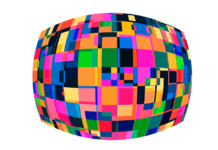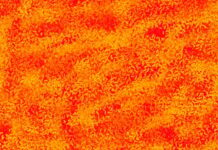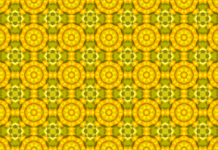Quantum-Enhanced Weather Forecasting: Bridging the Gap Between Precision and Chaos
In the world of weather forecasting, accuracy is paramount. Accurate weather predictions not only influence daily activities but also play a vital role in disaster preparedness and resource management. Despite significant advancements in meteorological science and computational techniques, weather prediction remains a complex endeavor due to the inherent chaotic nature of the Earth’s atmosphere. However, a promising frontier has emerged in the form of quantum-enhanced weather forecasting, harnessing the principles of quantum mechanics to potentially revolutionize the accuracy and lead time of weather predictions.
Quantum mechanics, the fundamental theory governing the behavior of matter and energy at the smallest scales, has already revolutionized various fields such as cryptography, computing, and communication. Quantum computers, a cutting-edge development in this realm, have the potential to process information in ways that classical computers simply cannot. This capacity opens the door to solving complex problems that have been historically intractable, and weather forecasting is one such challenge. The convergence of quantum computing and meteorology gives rise to quantum-enhanced weather forecasting, offering a new paradigm for improving the precision and lead time of weather predictions.
Traditional weather forecasting relies on computational models that simulate the behavior of the atmosphere based on a multitude of factors, including temperature, pressure, humidity, wind patterns, and historical data. These models are, however, subject to limitations imposed by the sheer complexity of atmospheric interactions and the inherent chaotic behavior of the system. While classical computers have made significant progress in improving the accuracy of short-term weather predictions, the accuracy drops as the forecast horizon extends further into the future. This is largely due to the sensitivity of the chaotic atmospheric system to initial conditions – a phenomenon famously termed the “butterfly effect,” where a small change in one part of the system can lead to drastic differences in outcomes over time.
Quantum-enhanced weather forecasting seeks to address this challenge by harnessing the unique properties of quantum computers, such as superposition and entanglement. Superposition allows quantum bits, or qubits, to exist in multiple states simultaneously, enabling the quantum computer to explore a vast number of possibilities in parallel. Entanglement, on the other hand, creates correlations between qubits that result in a higher degree of interconnectedness, potentially facilitating more efficient problem-solving.
One of the key areas where quantum computing can make a significant impact on weather forecasting is through optimization problems. Weather prediction involves optimizing a vast array of parameters to produce the most accurate forecast. Classical computers struggle with solving these complex optimization problems efficiently, especially as the number of variables increases. Quantum computers, with their inherent parallel processing capabilities, could potentially explore a broader solution space in a much shorter time, leading to more accurate predictions.
Furthermore, quantum-enhanced algorithms offer the potential to refine data assimilation techniques. Data assimilation involves integrating real-time observations with model predictions to update and refine the forecast. Quantum computers could enhance the efficiency of this process, enabling meteorologists to incorporate a larger volume of observational data, leading to more accurate and timely adjustments to the forecast model.
Uncertainty quantification is another critical aspect of weather forecasting that stands to benefit from quantum computing. Weather predictions are often accompanied by uncertainty estimates, indicating the range of potential outcomes. Quantum computers could improve uncertainty quantification by considering a multitude of possible scenarios simultaneously, providing a more comprehensive and nuanced understanding of forecast uncertainty.
Challenges, however, abound in the journey toward quantum-enhanced weather forecasting. Quantum computers are still in their infancy, with current technologies facing issues related to qubit stability, error rates, and scalability. Building and maintaining a quantum computer suitable for complex weather simulations presents formidable technical hurdles. Additionally, quantum algorithms tailored to weather forecasting must be developed and fine-tuned, requiring collaboration between quantum physicists, computer scientists, and meteorologists.
In conclusion, quantum-enhanced weather forecasting holds the promise of transforming an age-old challenge by leveraging the principles of quantum mechanics and the computational power of quantum computers. The marriage of quantum physics and meteorology has the potential to bridge the gap between the chaotic nature of the atmosphere and our desire for accurate, long-term weather predictions. While significant hurdles remain, the progress made in quantum computing and the growing interest in interdisciplinary collaboration bring us closer to a future where quantum-enhanced weather forecasting could revolutionize the way we anticipate and prepare for the ever-changing atmospheric conditions.
The realm of weather forecasting has always captivated human curiosity, driven by the necessity to understand and predict the complex interplay of atmospheric phenomena. As we stand on the precipice of a new technological era, the fusion of quantum mechanics and meteorology introduces a compelling narrative of possibility and innovation. Quantum-enhanced weather forecasting beckons us to reimagine the limits of our predictive capabilities, offering a tantalizing glimpse into the future where precision and chaos converge in unprecedented ways.
Quantum mechanics, a theoretical framework born out of the perplexing behavior of subatomic particles, has consistently defied conventional intuition. Its principles have granted us a deeper understanding of the universe, leading to a cascade of revolutionary advancements in diverse fields. The advent of quantum computers, with their potential to manipulate and process information at an entirely new level, has ignited excitement for tackling some of humanity’s most intricate challenges.
Within the intricate tapestry of atmospheric dynamics, weather forecasting has historically been characterized by its intricate web of uncertainties. The chaotic nature of the Earth’s atmosphere, where infinitesimal perturbations can amplify into vastly divergent outcomes, has posed a formidable obstacle to achieving long-term accuracy in predictions. However, with quantum-enhanced weather forecasting, the narrative is poised for an alteration.
At the heart of quantum-enhanced weather forecasting lies the enigma of quantum bits, or qubits. These quantum entities, in contrast to classical bits, can exist in multiple states simultaneously, thanks to the phenomenon of superposition. Such an attribute opens the door to processing immense quantities of data and scenarios in parallel, a prospect that could redefine the very fabric of forecasting. The complex optimization problems inherent in weather prediction, which have often strained the capabilities of classical computers, could potentially yield to the prowess of quantum computing.
Entanglement, another mysterious property of quantum mechanics, further elevates the potential of quantum-enhanced weather forecasting. This phenomenon links qubits in a manner that transcends conventional notions of correlation. In the realm of weather prediction, this interconnectedness could translate to a more holistic representation of atmospheric behavior, where the intricate relationships between various factors are seamlessly captured by the entangled qubits.
As quantum computing inches toward maturity, a confluence of disciplines takes center stage. Quantum physicists, computer scientists, meteorologists, and data analysts are united by a common aspiration: to harness the untamed potential of quantum mechanics and steer it toward understanding weather patterns that have confounded generations. The synergy between these diverse fields is poised to catalyze innovation, leading to the development of quantum algorithms tailored to weather forecasting.
The intricate dance between data assimilation and quantum computing takes on new dimensions in the context of weather prediction. Data assimilation involves the delicate choreography of merging real-time observations with model projections to refine the forecast. Quantum computers, with their ability to crunch vast volumes of data at an accelerated pace, could unveil the potential to fuse these inputs in ways previously considered unfeasible. The outcome could be a harmonious blend of empirical data and computational models, resulting in forecasts that transcend existing boundaries of accuracy.
Yet, the path to quantum-enhanced weather forecasting is not devoid of its share of tempestuous challenges. The nascent nature of quantum computing technology presents formidable obstacles. The stability of qubits, quantum error rates, and the daunting task of scalability are all hurdles that demand rigorous attention. Constructing a quantum computer capable of emulating the intricacies of the Earth’s atmosphere demands a symphony of technical finesse, collaboration, and innovation.
Uncertainty quantification, an integral facet of weather forecasting, takes on renewed significance in the quantum realm. Quantum-enhanced algorithms have the potential to not only assess a multitude of scenarios in parallel but also to refine the estimation of forecast uncertainty. These algorithms, in their quantum dance, could paint a richer tapestry of potential outcomes, empowering decision-makers with a nuanced comprehension of the range of possibilities.
As we gaze into the horizon of quantum-enhanced weather forecasting, the fusion of precision and chaos beckons us with promises of more accurate, timely, and comprehensive predictions. Beyond the realm of equations and simulations, quantum mechanics introduces an element of wonder – an invitation to explore the cosmos at its most fundamental level and channel that understanding into a domain as tangible as the weather outside our windows.
The narrative of quantum-enhanced weather forecasting is one of resilience, curiosity, and audacity. It echoes the sentiment of human progress – a relentless pursuit of unraveling nature’s mysteries and bending them to our advantage. In this narrative, quantum mechanics is not a mere abstraction; it becomes a vessel of transformation, transcending theoretical speculation to illuminate the practical aspects of our lives.
In the end, quantum-enhanced weather forecasting invites us to traverse the boundary between the known and the unknown. It challenges us to merge the abstract and the concrete, the theoretical and the pragmatic, and the chaotic and the precise. It symbolizes a juncture where scientific inquiry and technological prowess converge, embarking on a journey where the mysteries of quantum mechanics meet the mysteries of the atmosphere, with the potential to shape the way we perceive, prepare for, and respond to the capricious dance of weather phenomena.
The marriage of quantum mechanics and weather forecasting beckons us to venture beyond the realm of the mundane and embrace the profound intricacies that govern the behavior of our planet’s atmosphere. The symphony of nature’s elements, from the gentle caress of a breeze to the tempestuous fury of a storm, has captured the human imagination for eons. It is in this enchanting ballet of air, moisture, and energy that we find the heart of weather forecasting—a dance of science and art that attempts to decipher the cryptic language of the skies.
As we delve into the frontiers of quantum-enhanced weather forecasting, we are confronted with the sheer awe-inspiring nature of the universe. Quantum mechanics, often relegated to the esoteric domains of laboratories and theoretical physics, emerges as a guiding star that could navigate us through the uncharted waters of atmospheric prediction. It invites us to leave behind the comfort of classical certainties and embrace the uncertainty inherent in quantum states—a paradoxical realm where particles are both here and there, now and then, and everything in between.
In the tapestry of weather forecasting, quantum mechanics introduces an exquisite thread of possibility. It challenges us to stretch our cognitive boundaries and envision a landscape where weather prediction transcends its historical limitations. The unpredictability that has often shrouded long-term forecasts is met with the tantalizing prospect of quantum superposition—a state where a quantum system can inhabit multiple states simultaneously. This superposition is not a mere abstract notion; it’s a whisper of reality that defies the classical binary thinking and opens the door to exploring an array of potential scenarios at once.
Entanglement, another marvel of quantum mechanics, makes its way into the fabric of atmospheric exploration. The entanglement of particles, seemingly connected beyond spatial constraints, invites us to reflect on the hidden connections that underlie the seemingly chaotic dance of weather patterns. Like the intricate choreography of entangled particles, the fluid dynamics of the atmosphere exhibit a certain coherence that, when deciphered, could yield unprecedented insights into the progression of storms, the onset of heatwaves, and the onset of rains.
The journey toward quantum-enhanced weather forecasting transcends the scientific realm, delving into the heart of human ambition and curiosity. It showcases the relentless spirit of exploration that has driven us to decipher the enigmas of the cosmos. The same spirit that guided us to the moon and unlocked the power of the atom now compels us to unveil the secrets of the atmosphere. This symbiotic interplay between scientific inquiry and human aspiration is emblematic of the grand narrative of progress—the eternal pursuit of pushing boundaries, expanding horizons, and seeking illumination in the midst of uncertainty.
In the realm of quantum-enhanced endeavors, we find ourselves on the cusp of a technological renaissance. Quantum computers, with their potential to navigate a multitude of possibilities in a fraction of the time it takes classical computers, stand as a testament to human ingenuity. As we strive to harness the power of these quantum wonders, we are reminded that the journey is not one of solitary pursuit but of collaborative exploration. Quantum physicists, meteorologists, computer scientists, and engineers converge on a shared mission, fusing their expertise to pave the way for a new era of forecasting.
The quest for quantum-enhanced weather forecasting embodies the artistry that often accompanies scientific endeavors. Beyond the equations and algorithms lies a canvas where creativity and imagination meld with empirical data. It is a canvas painted with the brushstrokes of cutting-edge technology and the strokes of human insight. In this fusion, science and art coalesce, breathing life into the pixels and digits that construct our understanding of the atmosphere’s hidden symphony.
The challenges that accompany quantum-enhanced weather forecasting stand as reminders of the complexity of our world. The nascent nature of quantum technology, the delicate dance of qubits, and the intricate calibration of quantum algorithms underscore the uphill journey that pioneers in this field must undertake. But challenges are not adversaries; they are catalysts for innovation. The very act of confronting these obstacles fosters an environment of ingenuity and resilience, where the minds of scientists and researchers are set ablaze with the fires of determination.
As we peer into the horizon of quantum-enhanced weather forecasting, we are beckoned by the promise of precision. The intricate dance of atmospheric variables, once confined to the realm of uncertainty, now offers a stage for quantum mechanics to unveil its elegant choreography. The whisper of a breeze, the ominous roll of thunderclouds, and the gentle patter of raindrops all resonate with a new resonance—one that vibrates with the harmonies of quantum phenomena.
The narrative of quantum-enhanced weather forecasting resonates with humanity’s enduring desire to decipher the enigmatic codes that govern our world. It is a story that transcends the barriers of disciplines and domains, merging the abstract beauty of quantum mechanics with the pragmatic pursuit of accurate predictions. It reminds us that our journey as explorers of the universe is far from over—that with every discovery, we unfurl a new chapter in the epic saga of our collective evolution.
In the symposium of science, quantum-enhanced weather forecasting finds its voice as a testament to human potential. It is a verse in the cosmic poem that speaks of innovation, collaboration, and the ceaseless quest for understanding. It is a reminder that as we uncover the mysteries of the universe, we inevitably uncover the mysteries within ourselves—our capacity to dream, to create, and to steer the course of nature’s melodies, one quantum leap at a time.


















